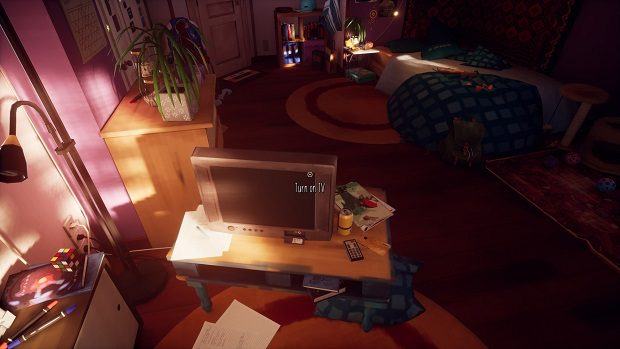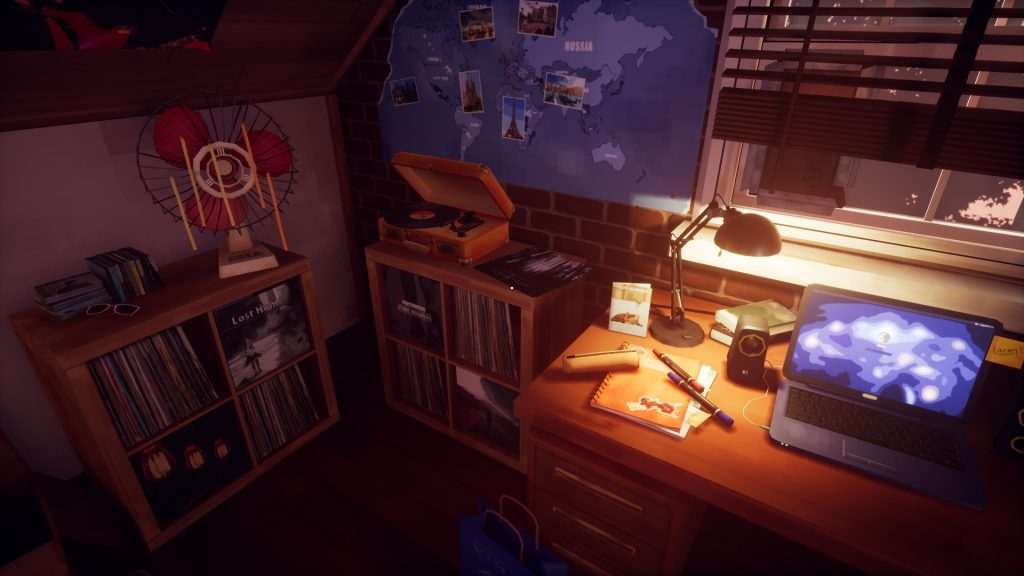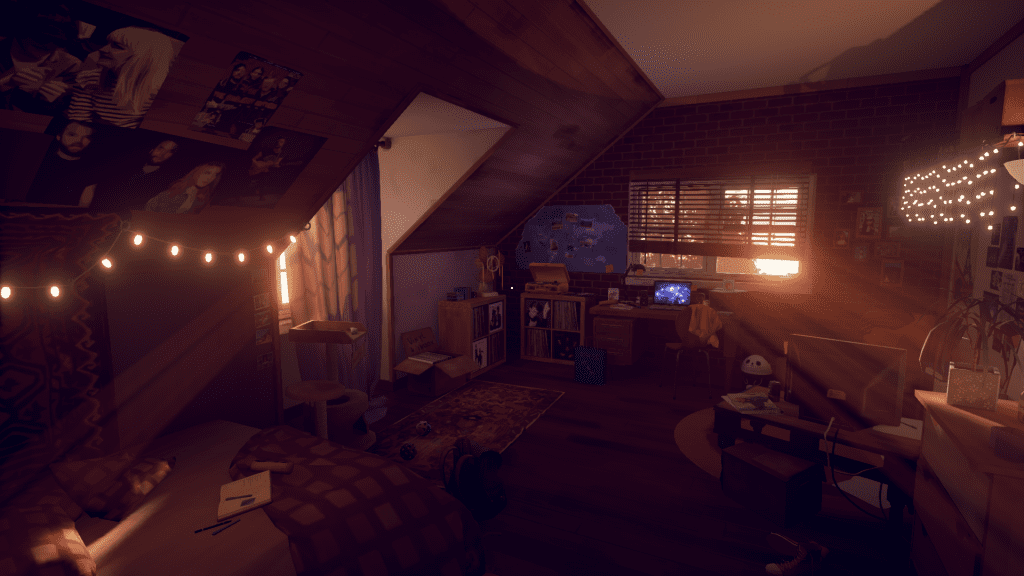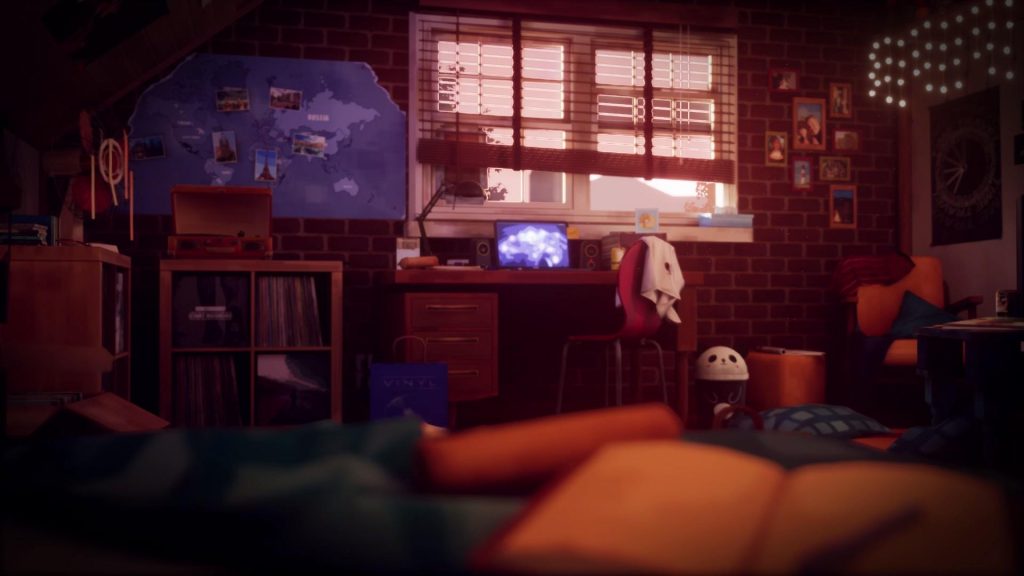Summary
An impressive bit of careful and meticulous small-scale worldbuilding, Marie’s Room is a (free!) narrative adventure that is well-worth the half-hour it takes to play through.
There are two things you ought to know about Marie’s Room: that it’s short, and that it’s free. Both should be reason enough to play it, even if you’re not entirely enchanted by the idea of another Gone Home-style narrative game in which the secrets of a missing person’s life are revealed by fondling the belongings they left behind.
I can’t say I blame you. It has been almost half a decade since Gone Home, and the only game that has come close to bottling the same lightning is What Remains of Edith Finch, which at least had the advantage of feeling like a surrealist magical-realism acid trip. The theme of exploring an old, abandoned space and putting memories together seems a bit creatively bankrupt these days, which is why Marie’s Room is so surprisingly charming.

Set almost entirely in a single bedroom and lasting around half an hour, there isn’t much to it. And the game seems to revel in that. When you load it up you’re given a little warning that you won’t be able to save; Marie’s Room is designed to be played in one sitting. I think that’s a bit ridiculous, personally, but no matter. I get the point. Its scaled-back approach only provides one room, Marie’s room, but it’s so carefully and meticulously designed that one is all you need. I wish more games were confident enough to offer so little.
You don’t play as Marie. You never even see her, as it happens, except in photographs that end up in her scrapbooked journal alongside ticket stubs and other bits of random tat. It all means something. The journal is what your character, Kelsey, is there to collect, the last bit of personality in a packed-up, empty room. As soon as she picks it up and leafs through it, she remembers the place as it used to be, and suddenly it’s alive again. The purpose of the game is to explore the room as it once was, and to piece together the events that led to its abandonment.

You can look at or pick up almost everything in Marie’s room; posters, keys, pizza boxes, laptops, phones, ring-binders, clothing. Each interaction prompts a memory, which Kelsey narrates. At first, none of it makes sense. The game treats you as if you’ve always been there, and doesn’t bother to explain who people are or what their relationship to each other is. Which is the point, obviously. The player puts the scattered information together like the odds and ends in Marie’s diary, which you can keep returning to as new memories paper over the gaps between the old ones.
Marie’s Room is clever in that it allows you to explore the area at random, letting certain items draw your attention first, and making a note of the salient details. You’ll likely return to things later, when you have more context, just to understand the story better. But it isn’t mandatory. You’re not steered in a particular direction, and you don’t need to have one secret discovered for the game to reveal another. That’s part of the fun; putting the pieces together, assembling this strange narrative so that all the people and places and objects form a satisfying explanation of what happened.

There are two pieces of information that’ll require a bit of exploration to discern; one’s a computer password, the other’s a five-digit code. Neither takes much effort to figure out, but that’s fine. They’re there to give the short experience structure, to provide a midpoint and a conclusion to work towards. You know that once you crack the (literal) case, all the secrets will be revealed, and you’ll leave the way you came in, along the landing outside the bedroom, but the photos on the wall will no longer be of strangers, but people you’ve come to know and understand a little.
If Marie’s Room has a problem, it’s that the secret-spilling of the finale does too much of the narrative work. Some of those revelations, or at least the details surrounding them, might have been better served as smaller reveals during Kelsey’s examination of the room’s contents. As it stands, while you unearth a lot of information by poking through Marie’s belongings, the ending still feels as though it’s plainly telling you all the good stuff. Removing the player’s complicity in that feels like a mistake, albeit a small one.

For a game made by only two people (Kenny Guillaume and Dagmar Blommaert) that follows such a well-worn template and costs no money to play, Marie’s Room is undeniably a stellar small-scale achievement. The lack of a save system is needlessly obnoxious and some tighter pacing around the story’s revelations would have been welcome, but all in all it’s such an engaging 30-minute diversion that I can’t hold those minor criticisms against it.
Have a look around Marie’s room. Let me know what you find.



